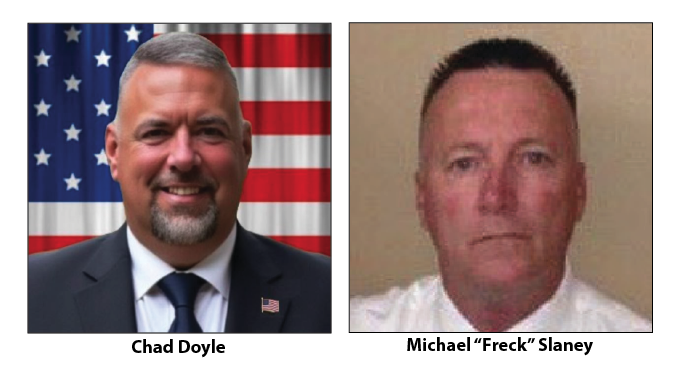In the aftermath of Laura, frustration continues
Published 4:15 pm Tuesday, September 7, 2021
An online news source recently announced that insurance company top execs received total compensation – including big bonuses – of around $20 million in 2020, tough news to take here in Southwest Louisiana where some residents are still not back home after filing claims with their insurance companies. Below are only two examples of people who are still struggling, and the specifics on what execs from Allstate, State Farm and Travelers received.
s
No one answered when a Calcasieu Parish homeowner called the phone number that she had been given to reach her ninth insurance adjuster. It was Monday, Aug. 30, 2021, the day after Hurricane Ida, and she assumed he was busy handling new claims. She tried another number, given to her earlier in the year and she did make contact. Work has finally begun on rebuilding the home her family lost to Hurricane Laura, but she continues to push for every cent to which she is entitled, according to her interpretation of her policy.
Trending
s
Another policyholder who lives in Lake Charles called her insurance company the morning after Hurricane Laura and had filed her claim by noon on Aug. 27.
“When the person answered, she told me I was her first Hurricane Laura claim,” the Lake Charles policy holder said. “A tornado picked up the roof, took one section with it and set the other section of the roof back down.”
The first insurance adjuster came 10 days later and left after a few minutes. The house was in shambles. The way the tornado twisted the roof most likely had left it structurally unsound, but the insurance company said it could be repaired.
The contractor told the family that he could not in good conscience rebuild what was left, but that was not the only surprise.
This Lake Charles family lives in a flood zone and pays $600 a month flood insurance. Because of that, they were advised by FEMA and the parish that the house would have to be lifted five feet off the ground before repairs to the shambles could begin. The cost to lift the $575,000 home in which this family had $200,000 in equity would be $304,000. FEMA would pay 75 percent of that cost.
Trending
A structural engineer was sent out and he sided with the insurance company. Lift the house and then rebuild it.
“So here we are,” she said, “about to spend our money and the taxpayer’s money to lift this house that’s 98 percent destroyed.”
It occurred to the family many times that this option was not only not pragmatic, but it was also more costly than demolishing the house and rebuilding it five feet off the ground.
Nevertheless, the house was raised. The contractors begin to frame it. The house collapsed, after around $304,000 was spent to lift it and another $200,000 in labor and materials to begin repairs.
“State Farm says the damage is because of the lift; it’s not hurricane damage,” the LC resident said. “Now we’re left with no equity and a house that requires $800,000 to repair,” she said.
She doesn’t know if it will come to litigation because she knows that is certainly not always the answer. She mentions others who hit a brick wall and didn’t know what else to do and did turn cases over to attorneys with the impression that they would receive money to rebuild homes faster. That hasn’t been the case.
Another person they know decided to seek the help of an attorney and planned to apply for an SBA loan so that they could have the money to rebuild. The SBA loan was denied because it had been turned over to an attorney.
“I’m trying to get our house built and to get back in it,” she said, “with any funds I can get to do that. We have some money and a line of credit we can pull from. Considering the situations of so many others, we know it could be worse. We are mindful that we are blessed. But we’re pushing the 24-month mark. We’re aware of that and we can’t help but think our insurance company is as well and that’s why they’re doing what they’re doing.”
She said she has respect for her insurance agent, but as for the company in general — greed, irresponsibility and audacity were a few of the words she used to describe it.
To add insult to injury, the family continues to pay insurance premiums and flood insurance, and they’re racing the clock. If the house is not lifted by December, they will be required to pay the next year’s flood insurance premium in advance.
Insurance top management make millions
Not all policyholders had the time, skill set or fight in them to keep at it, and even those who did, even those who were relieved their insurance company met their expectations couldn’t help but express a little disgust when they read about the 2020 State Farm CEO Michael Tipsord’s compensation reported by The Pantagraph in July: $20 million, $20,266,505.62 to be exact, the “largest payoff he’s received since taking the helm of the Bloomington-based insurer in 2015” according to reporter Timothy Eggert.
The Pantagraph is a daily newspaper that serves the Bloomington-Normal Illinois area.
Allstate Chairman Thomas Wilson made more, $21,126,386, according to the article. Traveler’s Alan Schnitzer came in close at $18,990,270 and Susan Griffith with Progressive’s compensation was $15,220,523, according to the article.
“I’m offended for my friends and family who still aren’t in their homes because of battles with State Farm and he is being rewarded,” said Scott Waldrop, director of marketing for Lake Charles Toyota. “I also find their marketing in our area tone deaf and insensitive.”
An attorney that helped host a Lake Charles Insurance Town Hall meeting said these companies spend millions on marketing and advertising, and even in a year when fires, floods and hurricanes ravage the country, they still make hefty profits.
Like any business, the insurance business is about profit. Underwriting profits are the difference between what companies collect in premiums minus overhead and paid claims. The bottom line looks better at the end of the year, the lower the number of claims paid out. Insurance companies also invest to yield profits, and for savvy investors, 2020 was rewarding.
Here’s what State Farm Senior Vice President, Treasurer and Chief Financial Officer Jon Farney was quoted as saying in the State Farm 2020 Financials announcement released Feb. 21, 2021.
“We strive to help more people in more ways. In an unprecedented year like 2020, we focus on our core mission to help people manage the risks of everyday life, recover from the unexpected and realize their dreams. Whether premium relief, dividends to State Farm Mutual auto customers, payment flexibility or philanthropic efforts in the community where we live and work, we’re focused on relief and recovery efforts.”






